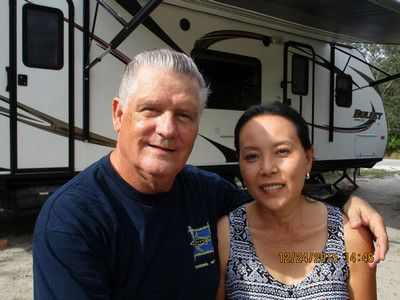How do you find an RV water leak?
If you have ever owned an RV or any kind of camping
vehicle for any length of time, then you probably had to deal with the fact
that you had a water leak somewhere.
So, how do you find an RV water leak?
First of all, I believe you must have the ability to be
able to fix almost anything. With that
said, how do you find a water leak?
Well, you just have to start looking.
Let’s say you see a puddle of water on the floor where it shouldn’t be,
what would be the first thing you’d want to do? Explore of course. Look
at everything and any place you suspect a leak to be coming from. Sometimes they come from a distance away and
are extremely difficult to find where the source is.
If possible, test with a water hose if you have one. Most RV’s of any size today come with a
water and electric hook up, so having water available is almost a given. Unless you’re doing some primitive camping,
without facilities.
Even if you own a tent and it’s leaking, you can probably
find the leak by pouring water over the suspected area and have someone looking
from the inside to see exactly where the leak is coming from.
We purchased our new Bullet RV in March of 2012, so you
would not expect it to be leaking anywhere inside, especially a mere 7 months later,
but much to our amazement, it did.
My first thought was that since it had rained that night,
the leak was coming from the outside storage door on the left side, because I
saw water near the wall and inside that storage area. Luckily for us, we could just open the little hatch they built
inside, next to the bed, and look down into the storage area.
After wiping up the little bit of water there was, I told
Karen that I’d check it out in the morning when it was daylight.
First thing the next morning, I found a little water
standing, so I wiped it up again until it was completely dry.
Since we didn’t want this small problem to interfere with
our morning fishing, we launched our little Sea Eagle boat and headed out to
catch some fish.
After returning from our morning fishing, I opened up the
outside storage door only to discover that water was still standing in a small
area close to the wall. Since it hadn’t
rained in the morning, I immediately knew the rain wasn’t the cause of this
leak, so again, I wiped it dry.
Because I have a
built in natural sense of fixing everything I can, I decided to pull off the
water connector from the outside wall and check the hoses.
I turned off the main water supply and proceeded to remove
the three screws holding the water connection to the side of our Bullet. Luckily for me, it was a lot easier than I
expected. However, I did notice that
the connector was well sealed against the side panel, and it made a suction
type noise when I pulled it away.
After pulling out the water connector, I then turned on
the main water valve, only to witness a very small drip, drip, drip coming from
where the hose inside our Bullet connected to the main water hose connection
from the outside.
A miracle, the water stopped leaking and I was a very
happy camper! So, after giving Karen
the good news, we both could relax knowing that problem of how to find a water
leak was solved.
Well, since we’re coming out of summer weather, it did
rain again that night, and again the next day, there was a very small amount of
water standing…again!
I knew right away that the outside seal had to be broken
to fix this problem, so I advised Karen that we stop at the hardware store on
the way home and buy some plumbers tape and silicone sealant.
So, after cleaning up the little bit of water, again, we
proceeded to prepare our Bullet for the short trip home.
We did stop at the hardware store to buy the things I
needed to fix that nagging little leak, and right there in their parking lot, I
again removed the water connector, unscrewed the water hose behind the
connector, wrapped some plumbers tape around the fitting, then put the sealer
all around the hole area, and finished putting in the three screws. Then as an extra bit of safety to avoid
future leaks, I ran a small bead of sealant around the edge of the outside
connector before heading for our storage area.
I was very happy that I knew how to find a water leak and
could fix it before any major damage occurred.
But believe me, some water leaks just can’t be found and you must
persist and try and fix what you think might be causing it. Lets face it, how do you find an RV water
leak isn’t always as simple as this!
Please come visit us!













